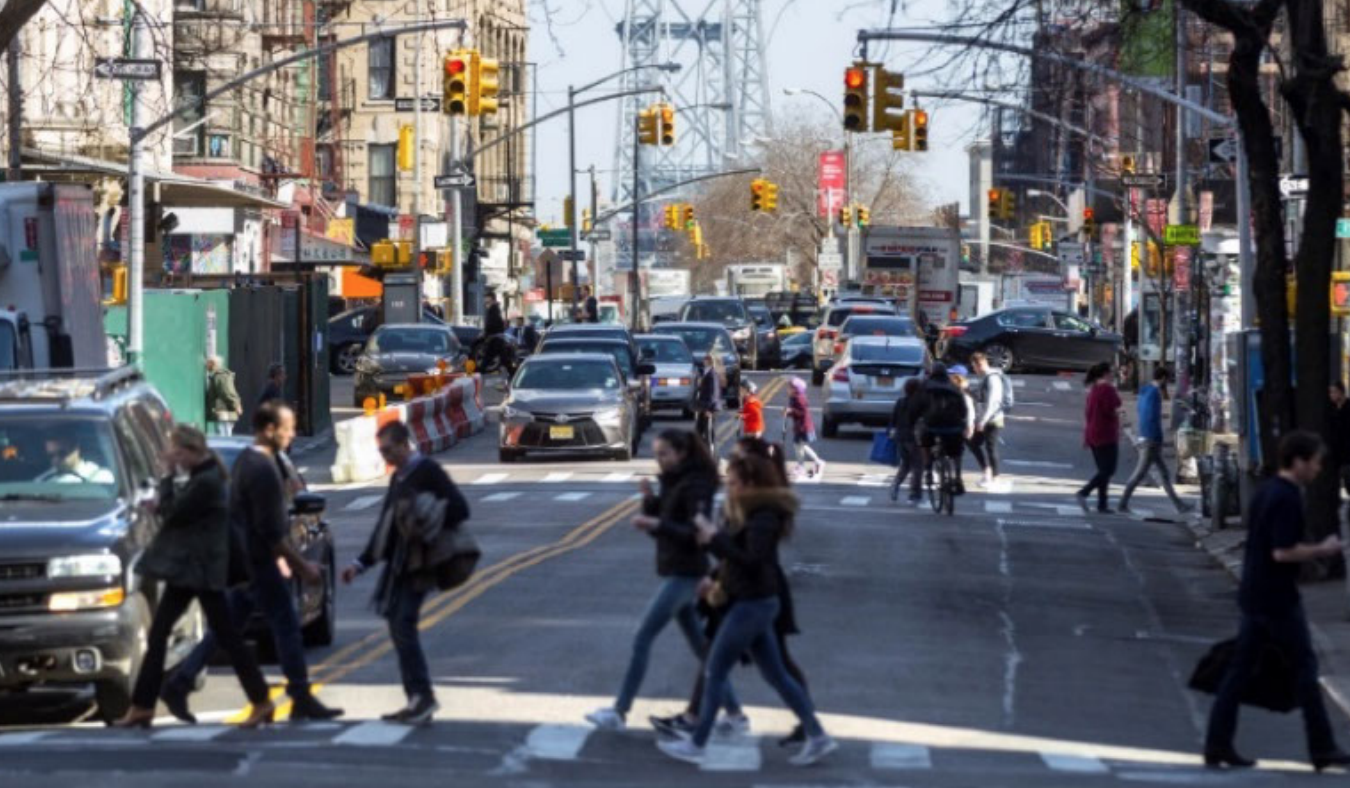The city has chosen a flawed traffic-mitigation plan in SoHo — which its own experts say will be worse for bus riders during the L-train shutdown next year — in a bid to appease fact-averse NIMBYs who fought the superior option by speciously alleging that it would block fire trucks.
When the L train's Canarsie Tunnel is closed on April 27, Kenmare Street will be a main conduit for shuttle buses between Williamsburg and subway transfer points in Manhattan, carrying 48 buses per hour during peak times. Over the summer, DOT said maintaining two-way traffic on Kenmare between Bowery and Cleveland Place would lead to blockages and traffic back-ups [PDF].
But an agency spokesman said that the ended up city choosing the two-way option because it was the preference of "stakeholders."
The spokesman declined further comment, but in public meetings over the summer, DOT representatives strongly implied that a one-way Kenmare would mean a smoother ride for bus riders because it would allow for a wider loading lane against the north curb and eliminate left turning vehicles from what is currently the eastbound travel lane.
Advocates couldn't believe that the DOT would choose the worse options.
"The city is leaving obvious transit improvements on the table at time when they ought to be using every tool at their disposal to keep people moving," Transportation Alternatives Organizing Director Tom Devito told Streetsblog.
During those public meetings and in presentations, the DOT referred to two competing schemes: "Option A" would have maintained a single eastbound lane for car traffic alongside a traffic lane, bus-only lane, and parking and loading lane in the westbound direction. But it would cause "bus blockages," "more difficult turns" and a travel lane that "would be blocked by drop-offs and pick-ups."
"Option B" would have made the entire street one-way, allowing for a wider parking/loading lane — and ensuring delivery trucks wouldn't spill into the way of bus traffic. It's clear from the documents that DOT preferred Option B, saying it would "reduce blockages and improve turns" and that one-way traffic "reduces vehicle conflicts."
But DOT went with Option A.
"This ... is part of a disturbing trend in which City Hall tries to placate a few loud voices at the expense of hundreds of thousands of New Yorkers whose commutes will be upended by the L Train shutdown," DeVito said.
The "few loud voices" in question were the Kenmare-Little Italy Loop Coalition, led by Georgette Fleischer of Friends of Petrosino Square. A one-way, Option B configuration on Kenmare Street "would be a disaster," Fleischer told the Villager in July, because doing so would supposedly hinder emergency vehicle access. To travel south, fire trucks from Engine 20 on Lafayette Street currently travel against the flow of traffic for one block after the exit the station house.
In early September, Fleischer and company held a rally calling on DOT to reroute the buses away from their neighborhood. Council Member Margaret Chin, State Senator Brian Kavanagh, and Assembly Members Deborah Glick and Yuh-Line Niou all attended.
"What they're planning on doing is changing the usage of the L train into buses — buses everywhere — and this does not make a great deal of sense," Glick told rally-goers.
The group made its case based on ill-informed concerns about air pollution, slower traffic, and loss of business.
Ultimately, the Kenmare Street connection is the fastest and least impactful way to connect L train riders to the Broadway and Lexington subways lines, the MTA wrote in its responses to public comments submitted to the Federal Transit Administration [PDF]. The report also concluded that the influx of diesel buses, which are significantly less polluting than they were in the past, would not have a noticeable impact on greenhouse gas emissions along the shuttle route.
The Option A vs. Option B debate may be moot on some level: DOT's traffic studies show that HOV3 restrictions on the Williamsburg Bridge will cut traffic on the corridor by as much as 75 percent. Eastbound traffic is already slim, according to DOT — just 615 vehicles per hour during the evening rush, of which 75 percent are bound for the bridge. With the bridge restricted to high-occupancy vehicles, most of that automobile traffic will evaporate.
"I can see why DOT would prefer to make Kenmare a one-way street [because it could be] a real bottleneck," bus rapid transit whiz Walter Hook told Streetsblog. "The one-way option would allow the traffic signals to be green waved, and would reduce the risks of the road getting blocked up."







